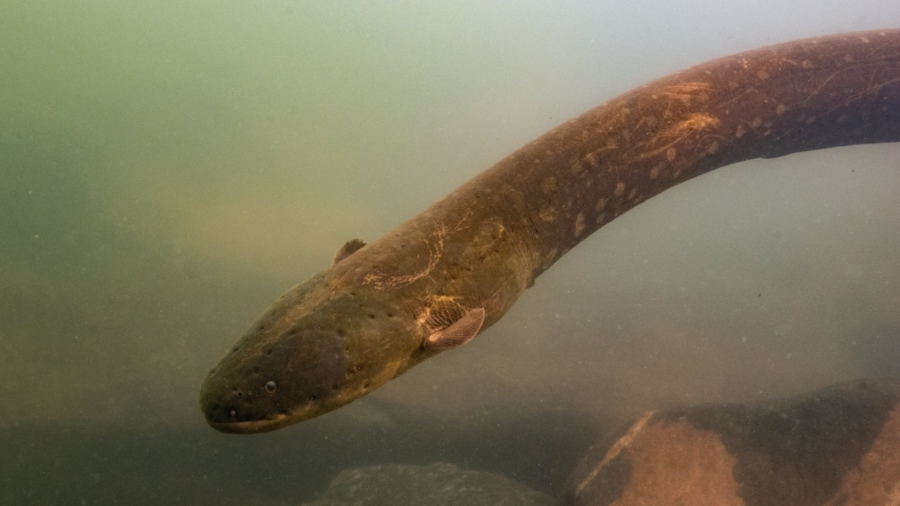A newly-identified eel living in the Amazon basin can deliver record-breaking electric jolts, according to a study published on Sept. 10.
Researchers at the Smithsonian’s National Museum of Natural History have identified two new species of electric eel in the Amazon rainforest, tripling the known number of electric eel species.
One of the new species—Electrophorus voltai—can discharge up to 860 volts of electricity, significantly more than the 650 volts generated by the known electric eel species, Electrophorus electricus, the study published in journal Nature Communications found.
These electric eels—which are actually a type of fish with an eel-like appearance—can grow to up to 8 feet (2.4 meters) and highlight how much is yet to be discovered in the Amazon rainforest, study leader David de Santana, a research associate at the Smithsonian’s National Museum of Natural History, said in a press release.
“They’re really conspicuous,” de Santana said. “If you can discover a new 8-foot-long fish after 250 years of scientific exploration, can you imagine what remains to be discovered in that region?”
What Are Electric Eels?
For 250 years, scientists have known that electric eels live in the Amazon basin. They just haven’t known how many species were lurking there.
Scientists long thought the electric eels found in swamps, streams, creeks, and rivers across South America were all the same species. The new study shows that the eels actually belong to three different species.
All three species look pretty much the same externally and use their electricity to navigate, communicate, hunt, and for self-defense. But when scientists analyzed 107 samples, they found that the three species had different genetic material, unique skull shapes, and different levels of voltage.
Based on their research, de Santana and his team believe that the three species began to evolve from their common ancestor about 7.1 million years ago.
The eels’ voltage may have been influenced by the conductivity of the waters they lived in, the research found. Electrophorus voltai, for instance, lived in the clear waters of the highlands which did not conduct electricity well. According to de Santana, the species’ stronger voltage may be an adaption to the poor conductivity of the water.
There are about 250 species of fish that are able to generate electricity, but electric eels are the only ones that use electricity to hunt and for self-defense.
In 1799, scientists used electric eels as the inspiration behind the first battery design, and they have also inspired ideas about how to improve technology and treat disease.
The newly discovered electric eel species could have evolved unique systems to produce electricity—perhaps a different system than the first discovered species—which could lead to more discoveries, de Santana said.
“It could really have different enzymes, different compounds that could be used in medicine or could inspire new technology,” he said.
![]()

